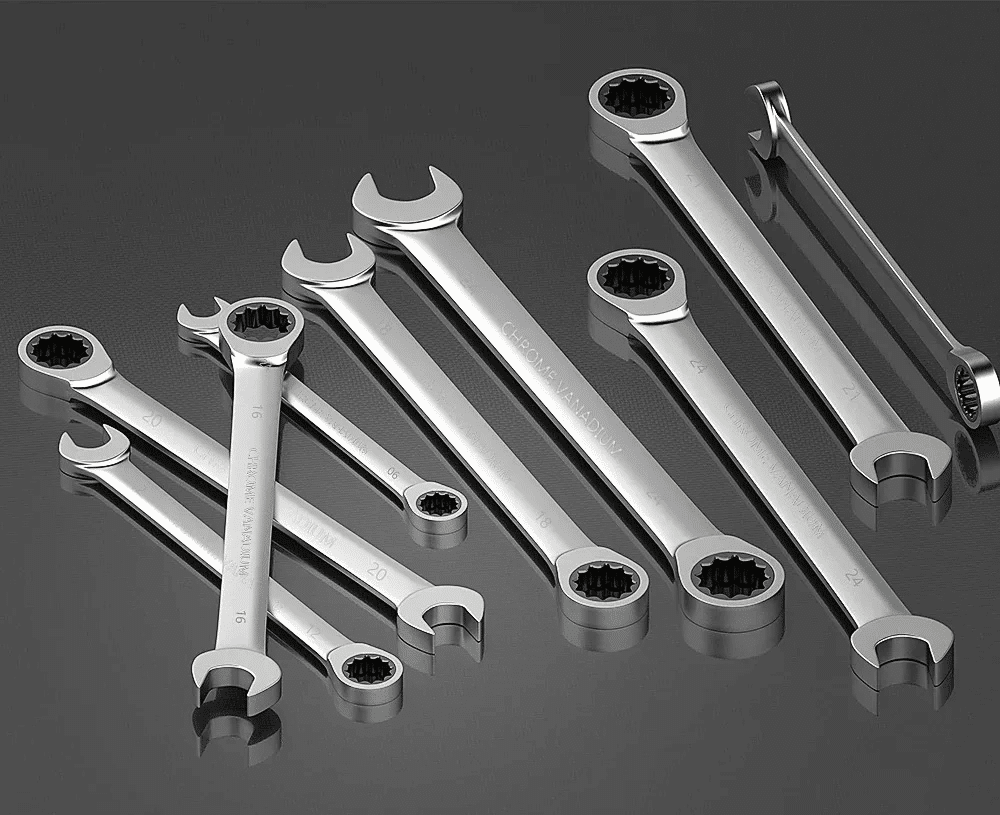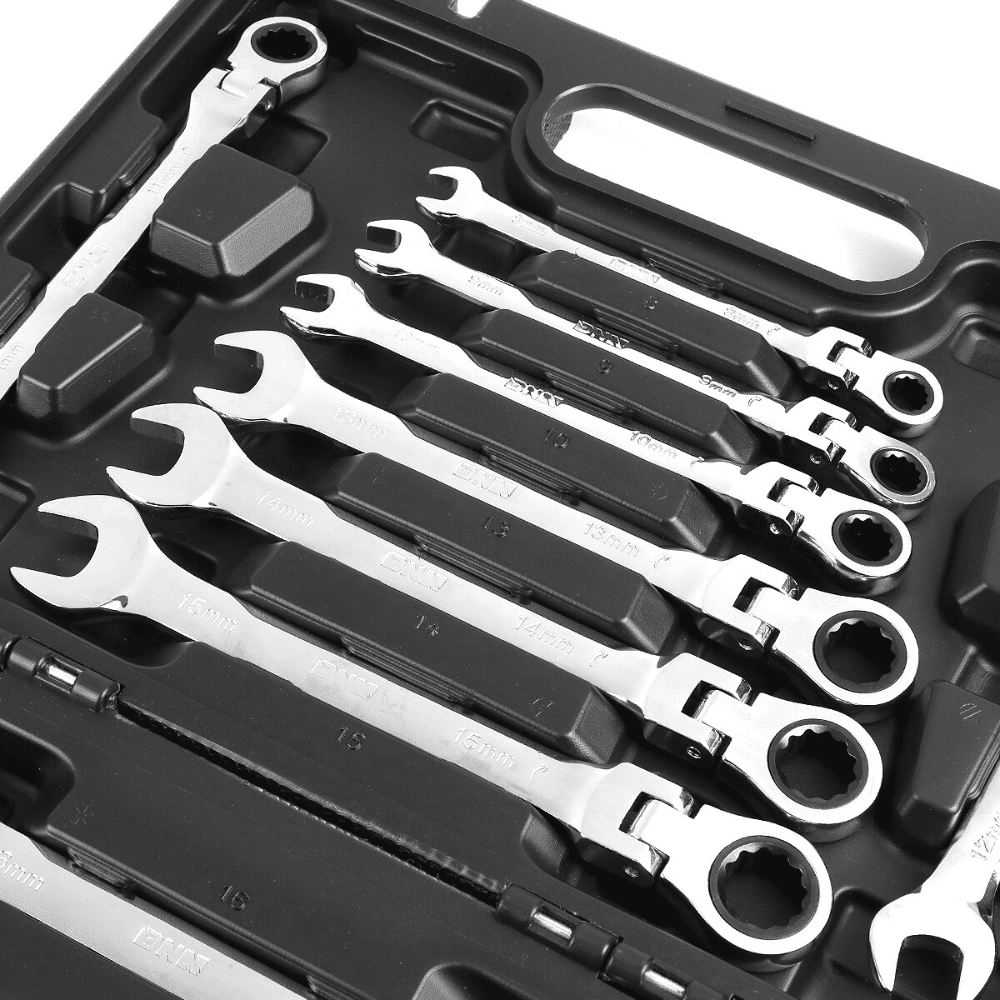📑Table of Contents:
- What is a Ratcheting Open-End Wrench?
- History and Evolution of the Ratcheting Wrench
- How Does a Ratcheting Open-End Wrench Work?
- Why Choose a Ratcheting Open-End Wrench?
- Types of Ratcheting Open-End Wrenches
- Tips for Using a Ratcheting Open-End Wrench
- Key Features to Look for When Buying
- Maintenance and Care
- Safety Precautions
- Ratcheting Open-End Wrench vs. Other Wrenches
- Popular Brands and Models
- Real-World Applications

When it comes to having the right tools in your toolbox, few are as versatile and essential as a ratcheting open-end wrench. This innovative tool combines the traditional open-end wrench with the functionality of a ratchet, making it an invaluable asset for mechanics, DIY enthusiasts, and anyone who works with nuts and bolts. If you’re tired of using standard wrenches that require constant repositioning, the ratcheting open-end wrench will change the way you work.
In this blog post, we’ll explore everything you need to know about the ratcheting open-end wrench, from its design and benefits to how it can save you time and effort in your daily tasks. Let’s dive in and discover why this tool is a must-have for both professionals and hobbyists.
What is a Ratcheting Open-End Wrench?
A ratcheting open-end wrench is a specialized tool that combines two essential features: the open-end design of a standard wrench and the ratcheting mechanism of a socket wrench. The open-end design allows you to fit the wrench around a bolt or nut, while the ratcheting mechanism enables continuous motion without having to remove and reposition the wrench.
Unlike traditional wrenches that require you to reposition them after each turn, the ratcheting open-end wrench allows you to rotate the wrench back and forth without lifting it off the bolt. This can significantly speed up your work and reduce the amount of effort required, especially when working in tight spaces.
History and Evolution of the Ratcheting Wrench
The ratcheting mechanism in hand tools dates back to the late 19th century. Early designs focused on improving speed for repetitive fastening. Traditional wrenches required removing and repositioning after each turn. Ratcheting technology solved this by allowing continuous motion without lifting. This innovation quickly spread across multiple tool types.
The open-end design added further flexibility. Over time, manufacturers improved ergonomics, materials, and durability. The result was a tool that could handle tight spaces with ease. Modern versions now combine strength with smooth operation. These advancements have made them a staple in professional and home toolkits.
How Does a Ratcheting Open-End Wrench Work?
The key feature of a ratcheting open-end wrench is the ratchet mechanism built into one of its ends. This mechanism allows for continuous movement in one direction, while the reverse direction is locked off, preventing the wrench from slipping off the fastener. Here’s a breakdown of how it works:
- Engaging the Ratchet Mechanism When you turn the wrench in one direction, the ratchet mechanism inside the head of the wrench engages, allowing the wrench to rotate freely. Once you release the wrench and move it back to the starting position, the mechanism locks in place and prevents it from moving in the opposite direction. This eliminates the need to remove the wrench from the bolt after each turn.
- Switching Directions Most ratcheting open-end wrenches feature a small switch or lever that allows you to change the direction of the ratchet. With this feature, you can easily toggle between clockwise and counterclockwise rotation, making it adaptable to different tasks. This simple action provides immense flexibility, especially when working in confined spaces or when multiple directions are needed.
- Open End for Accessibility: Like a standard open-end wrench, the ratcheting open-end wrench features an open jaw that fits around the flat sides of a bolt or nut. The open-end design allows you to quickly slip the wrench onto fasteners, making it easy to use in situations where space is limited or other tools might not fit.
Why Choose a Ratcheting Open-End Wrench?
The ratcheting open-end wrench offers several benefits over traditional wrenches and even other ratchet tools. Here are some of the top reasons why this tool is a must-have for any tool kit:
1. Time Efficiency
The most obvious benefit of a ratcheting open-end wrench is the time it saves. With a traditional wrench, you have to remove and reposition it after each turn, which can be time-consuming, especially when you’re working with multiple fasteners. The ratcheting mechanism allows you to keep the wrench on the bolt, eliminating the need for repositioning and drastically speeding up the process.
2. Reduced Effort
Ratcheting wrenches reduce the amount of effort needed to loosen or tighten bolts. Instead of using a back-and-forth motion that requires repositioning, the ratcheting open-end wrench lets you apply consistent force without taking the wrench off the bolt. This makes it ideal for projects that involve repetitive tightening or loosening, such as assembling furniture or working on a vehicle.
3. Convenience in Tight Spaces
The ratcheting open-end wrench is especially useful when working in confined or tight spaces. Traditional wrenches often require you to reposition the tool multiple times, which can be cumbersome in cramped areas. The ratcheting feature lets you work without removing the wrench from the bolt, making it much easier to navigate in tight spaces where traditional tools might struggle.
4. Durability and Strength
The design of ratcheting open-end wrenches makes them durable and able to withstand heavy use. They are typically made from high-quality materials like chrome vanadium steel or forged alloy, which makes them resistant to wear and tear. Whether you’re working on cars, construction projects, or home repairs, these wrenches are built to last.
5. Versatility
Ratcheting open-end wrenches are versatile tools that can be used for a wide range of tasks. Whether you’re tightening bolts on a car, assembling furniture, or fixing plumbing issues, these wrenches can handle just about any job. Their ability to fit into small spaces and provide continuous motion makes them incredibly adaptable for various tasks.
Types of Ratcheting Open-End Wrenches
Ratcheting open-end wrenches come in a variety of types, each suited for different purposes. Here are some common options to consider:
1. Standard Ratcheting Open-End Wrench
The most common type, this tool features a simple ratcheting mechanism and an open-end design. It is available in various sizes, making it suitable for different bolt sizes. This is ideal for general-purpose use.
2. Adjustable Ratcheting Open-End Wrench
This version offers adjustable jaws, which can be expanded or contracted to fit different sizes of fasteners. The adjustable nature makes it versatile, allowing you to tackle a wider range of tasks with a single tool.
3. Long Handle Ratcheting Open End Wrench
For added leverage and ease of use, the long-handle version offers more reach and power. This type is ideal for tasks that require additional torque, such as loosening stubborn bolts.
Tips for Using a Ratcheting Open-End Wrench
To get the most out of your ratcheting open-end wrench, here are some tips for effective and safe use:
1. Choose the Right Size
Make sure you select the correct size of wrench for the job. Using a wrench that is too small or too large for the fastener can damage the tool or the fastener itself.
2. Use the Correct Ratchet Direction
Before beginning, ensure the ratchet is set to the correct direction for the job. If you’re tightening a bolt, put the ratchet in the clockwise direction; if you’re loosening a bolt, switch it to counterclockwise.
3. Apply Even Pressure
When using the wrench, apply consistent pressure to avoid slipping. For best results, ensure the wrench is securely fastened onto the bolt or nut before turning.
Key Features to Look for When Buying
Build quality is critical in a ratcheting open-end wrench. Chrome vanadium steel offers strength and corrosion resistance. Stainless steel models provide durability with minimal maintenance needs. The choice of material impacts both performance and lifespan.
Comfort grips reduce fatigue during long tasks. An angled head can improve reach in awkward positions. Tooth count affects smoothness; more teeth mean smaller turning arcs. All these features influence efficiency and ease of use. Selecting the right combination ensures maximum value.
Maintenance and Care
Keeping the ratcheting mechanism clean is essential. Dirt or debris can cause slipping and reduce tool life. Wipe down the wrench after each use, especially the moving parts. Avoid exposure to excessive moisture to prevent corrosion.
Lubrication helps maintain smooth operation. A small amount of light machine oil works well. Store the wrench in a dry, organized space. Proper care not only extends its lifespan but also ensures reliable performance.
Safety Precautions
Hand positioning is key when using a open-end wrench. Keep your grip firm but controlled to avoid slips. Position yourself to pull rather than push when possible. This reduces the risk of injury if the tool slips.
Avoid over-torquing, which can damage both fastener and wrench. Use the tool within its intended limits. Following these precautions protects you and preserves your equipment. Safety should always be a priority in any fastening task.
Ratcheting Open-End Wrench vs. Other Wrenches
A ratcheting open-end wrench offers unique advantages over box-end and socket designs. It allows access to fasteners in places where sockets cannot fit. Unlike adjustable wrenches, it maintains a fixed size for secure grip.
Its speed in repetitive fastening makes it more efficient for certain jobs. In tight spaces, the small arc swing is a major advantage. This versatility explains its popularity among both professionals and hobbyists.
Popular Brands and Models
Several brands dominate the ratcheting wrench market. Companies like GearWrench, Snap-on, and Craftsman are well-regarded for quality. Premium models often feature fine-tooth mechanisms and advanced ergonomics.
Budget-friendly models still offer good performance for occasional use. The difference often lies in durability and smoothness. Choosing a reputable brand ensures consistent results over time.
Real-World Applications
Mechanics use ratcheting open-end wrenches for engine work where space is limited. Plumbers rely on them for fittings in tight spots. DIY enthusiasts appreciate their speed for home repair projects.
They are also common in industrial maintenance and assembly work. From automotive repairs to furniture assembly, their uses are wide-ranging. This versatility makes them a must-have in any serious toolkit.

Conclusion: The Must-Have Tool for Every Toolbox
The ratcheting open-end wrench is an essential tool for anyone who works with nuts, bolts, or fasteners. Its efficiency, versatility, and durability make it a top choice for both professionals and DIY enthusiasts. Whether you’re tightening bolts under the hood of a car, assembling furniture, or working on a home project, this tool is designed to save you time and effort while providing reliable results.
If you haven’t already added a ratcheting open-end wrench to your toolbox, now is the time to do so. Once you experience the ease and speed it provides, you’ll wonder how you ever managed without it.





